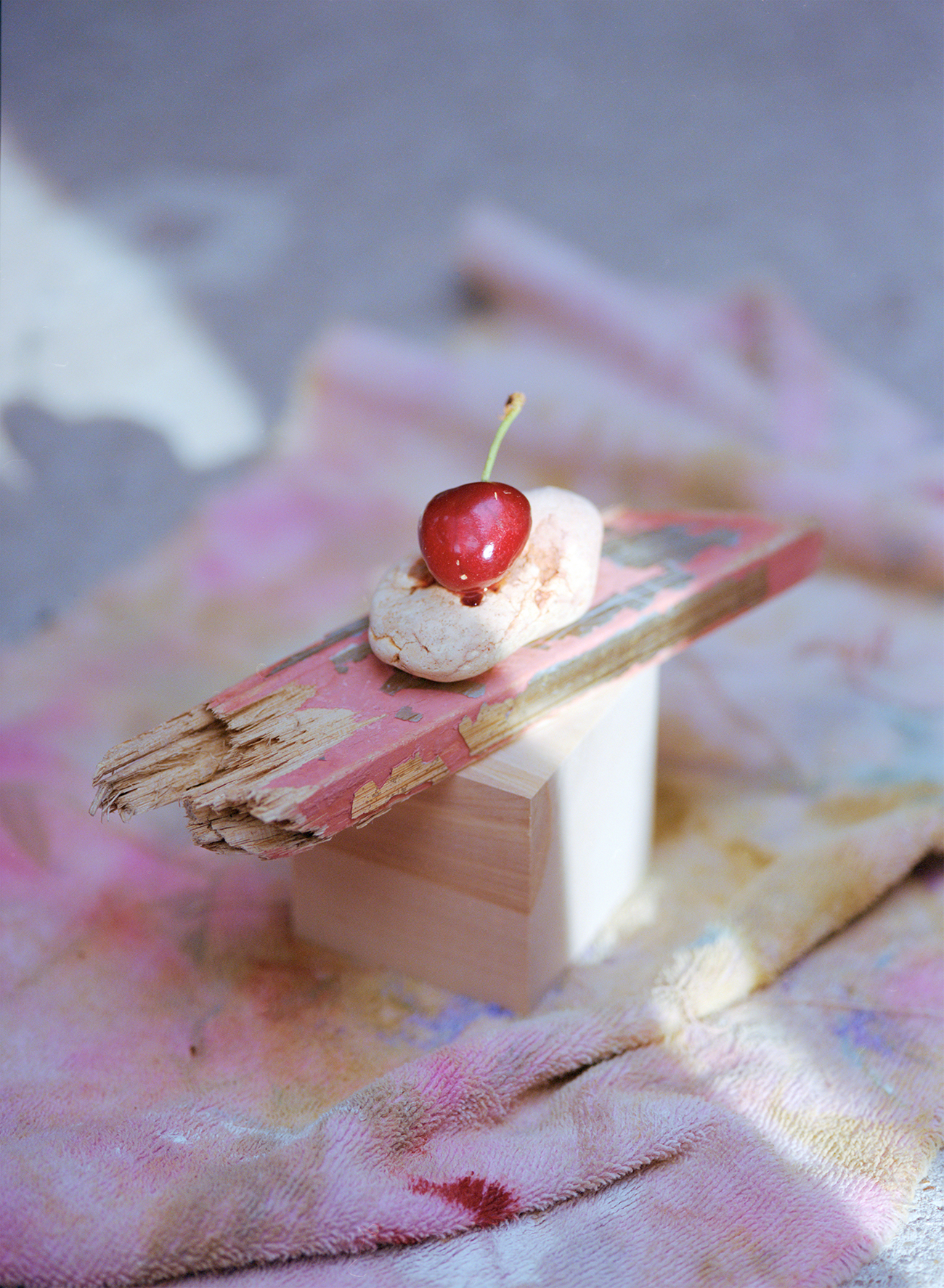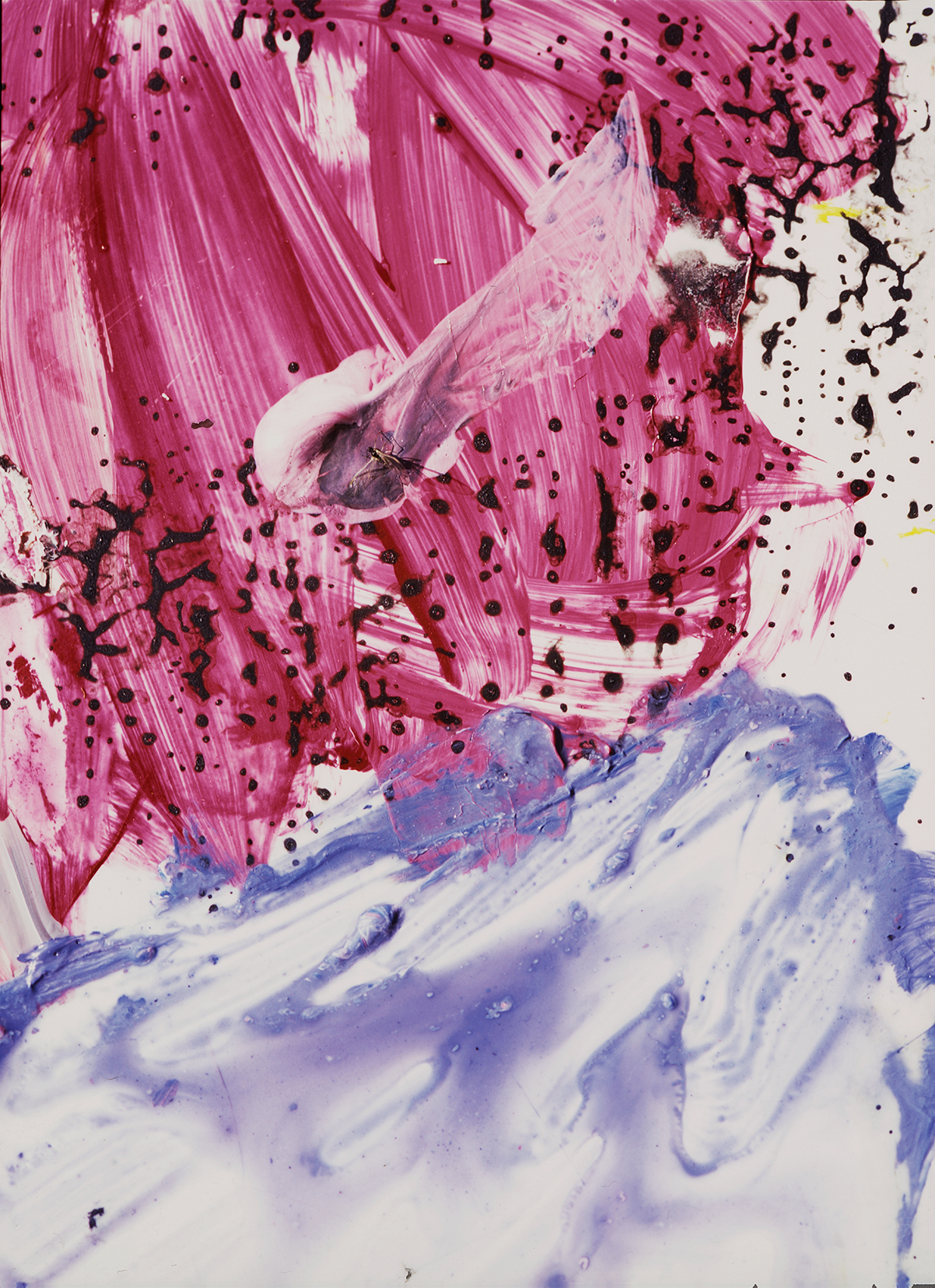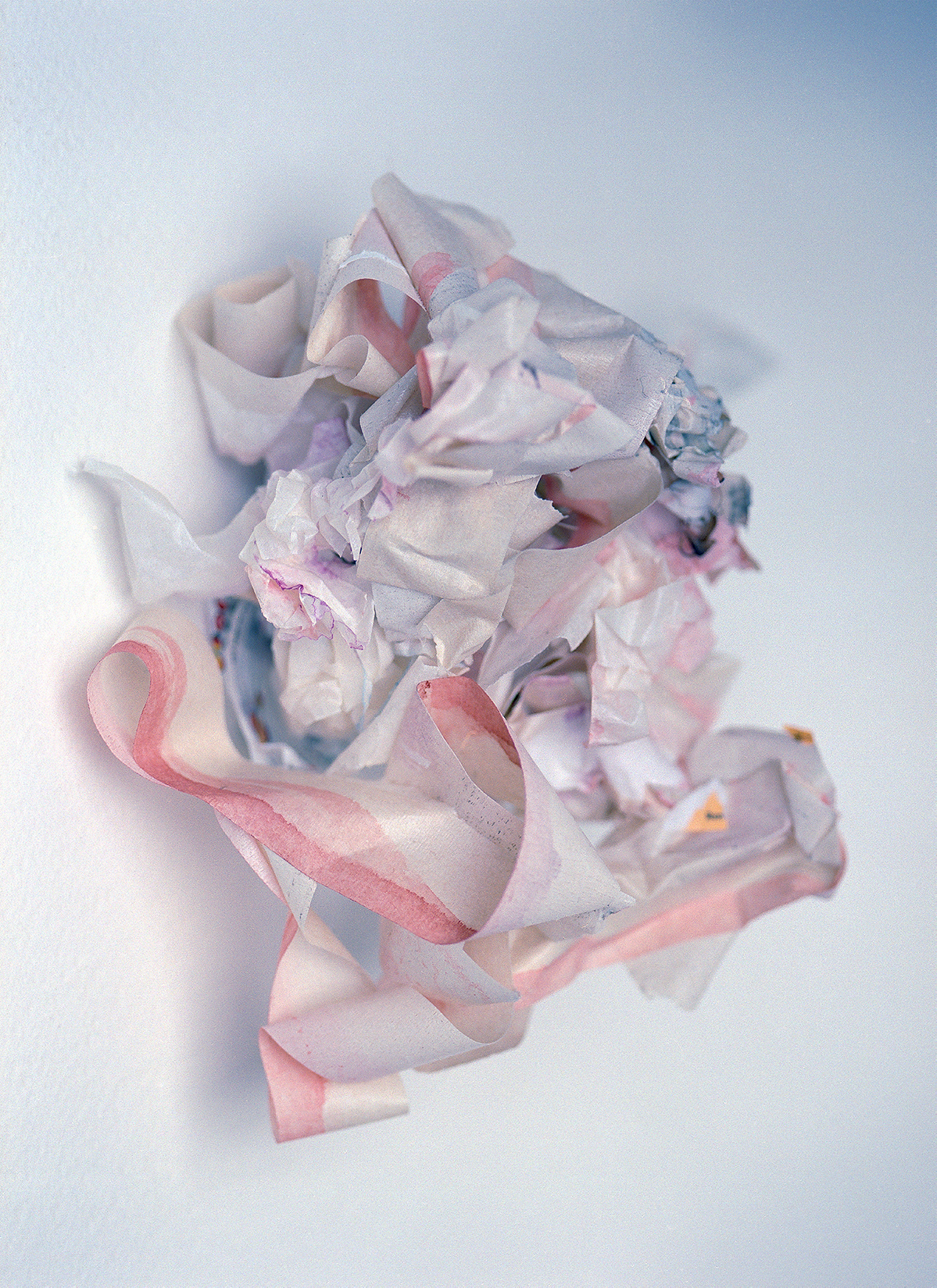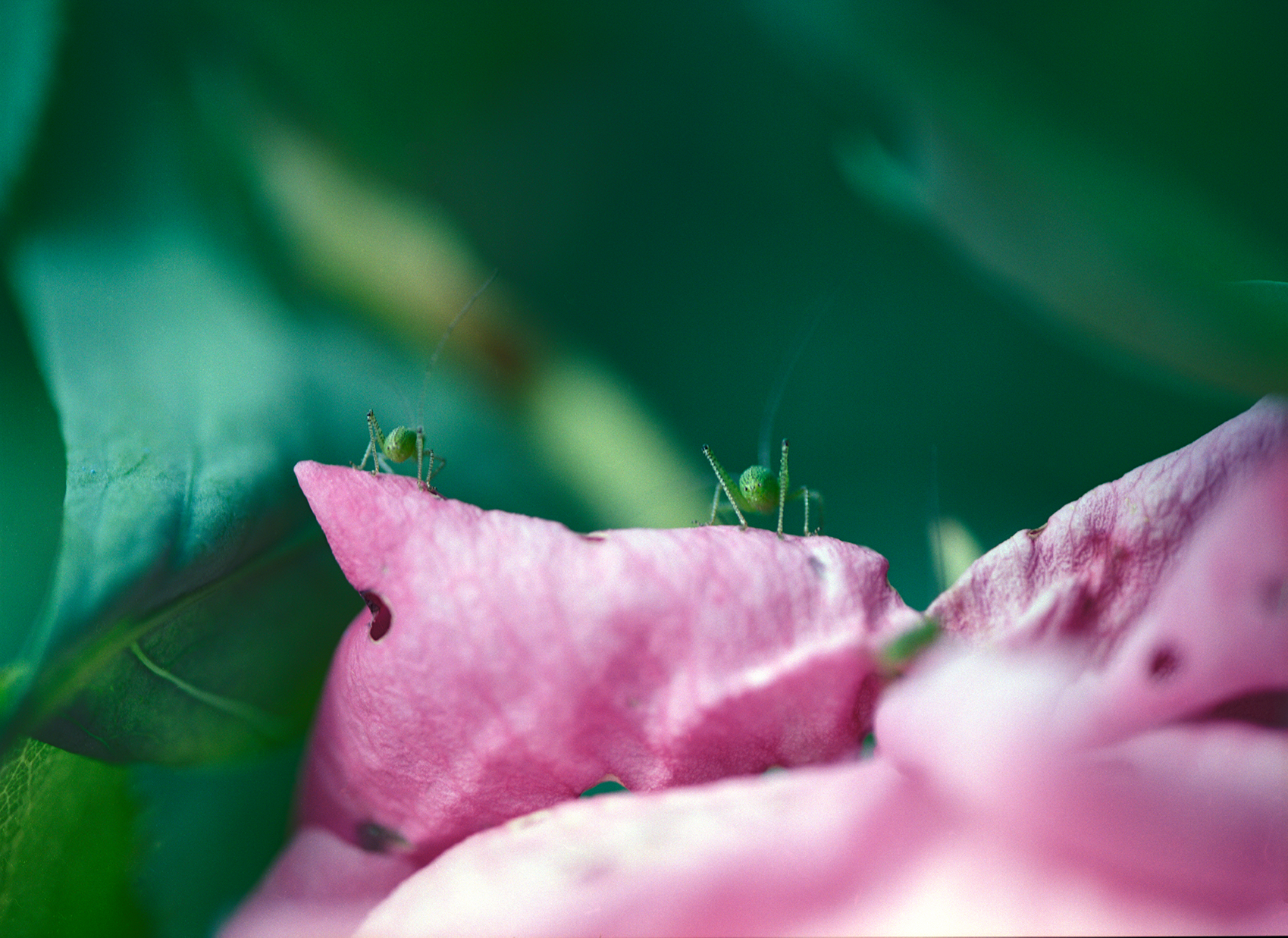










Sweet Microverse performs a kind of ‘in-folding’ as a response to the conditions imposed by a global pandemic. The series was built upon a daily two-mile walk through the marshland of coastal Suffolk. There, a sense of universal decay is witnessed in a calm, accepting, even sweetened mood, as conjured by the photographs’ pale pastel jewel tones, candyfloss pinks, and sugary purples.
As the wider macro-economic world both slowed to a standstill and underwent rapid (negative) change, the ‘microverse’ of these photos attends to the minute stagnations and transformations of the natural world. Capturing tiny restless bugs in moments of pause, days out from their birth, days out from their death; and meadows of wildflowers, different every day, as they unfurled, shifted, bloomed and fell.
The only direct sign of an outer world here is in a picture of a skid mark on a road – from a car long gone. And this is set suggestively beside a close-up of moss, which, like the road, is also scarred, though here by a fungus, its green dying into brown. A comparison between the two images is invited, hinting towards the wider world’s decline: the car will go, the moss will go, so any of this could go too. How better to signify this sense of something leaving, something ending, than with a sunset?
This colour scheme is extended from nature into works of watercolour. The aged pigments of a 1968 paint box were used to make multiple new paintings, which were then abandoned – in a kind of therapeutic processing of the contradictions of lockdown: being forced to sequester yourself in a tranquil space which is nonetheless constantly invaded by news of upheaval, uncertainty, and disaster.
The paintings themselves are not shown. The choice is made instead to privilege zoomed-in scraps, streaks on a wall, and a scrunched-up cluster of masking tape. The overall impression is of a bitter-sweet itemisation of types of decay and abandonment, echoing the forces of the unseen human world beyond.
Words by Jonathan Lyon